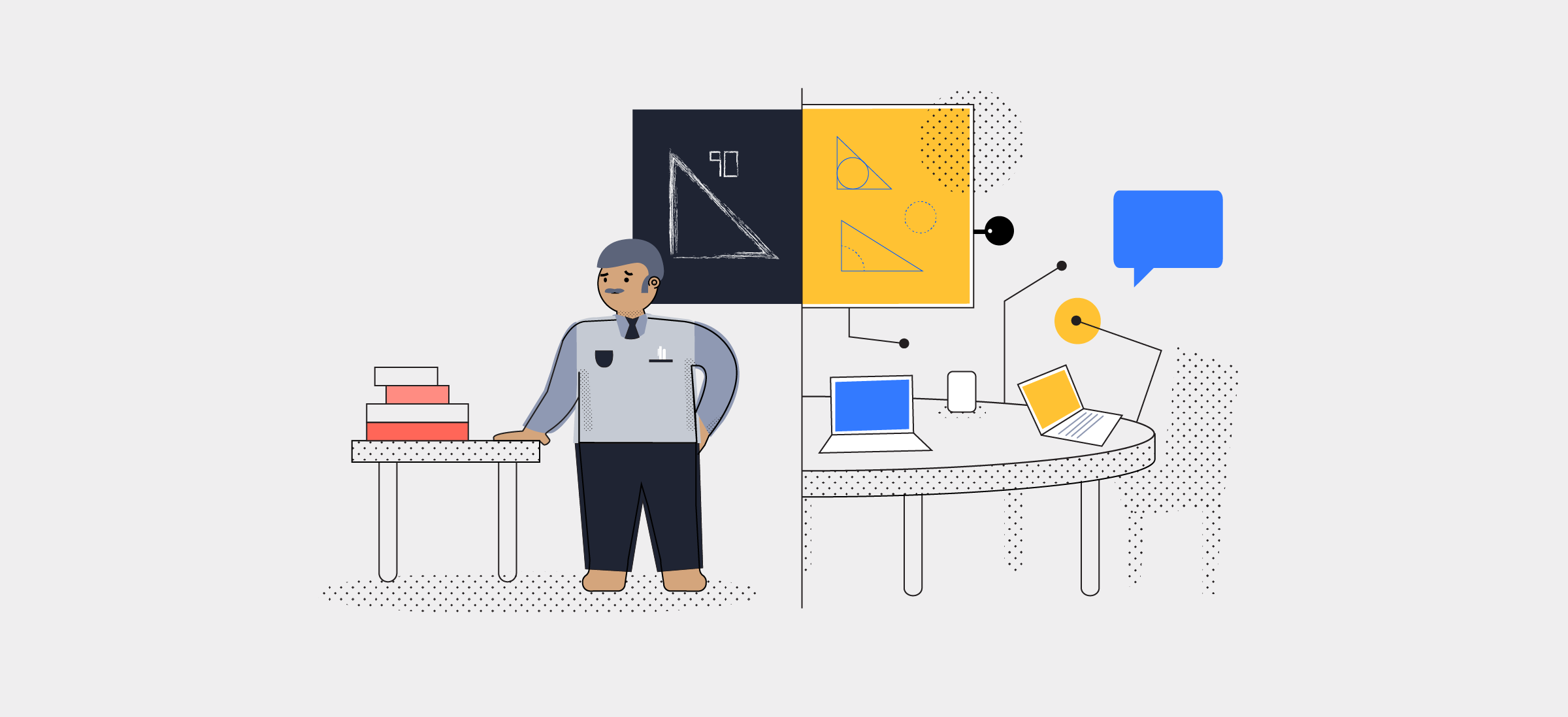The flipped classroom can prove both efficient and engaging, but it also comes with a few downsides. Here’s a full overview of what the flipped classroom is

The flipped classroom can prove both efficient and engaging, but it also comes with a few downsides. Here’s a full overview of what the flipped classroom is
We’ve come a long way since blackboards and long lectures with an educator in charge of everything. More specifically, we’ve come a long way technologically, and it’s beginning to infiltrate the way we teach and equip classrooms too. One way to implement technology in teaching revolves around what’s called “the flipped classroom”.
Flipped learning or flipped classroom refers to a teaching form that flips the traditional teaching structure.
How, though? Traditional teaching usually requires students to listen and stay passive in class as the teacher presents their material, and afterwards, the students do their homework actively at home. In a flipped classroom, students watch teacher-produced material at home where they can pause, skip or go back in the material any time they please, and then work on collaborative assignments in class.
Did you know that Lake Superior College saw a 70% decrease in IT support tickets after implementing Airtame? Learn more here.
In a flipped classroom, students have more control over their own learning. They are given the freedom to study at their own pace at home and take the time they need to understand difficult topics before asking questions in class.
The whole point to a flipped classroom is going from a top-down teacher-centric approach to a pedagogical shift that puts students in center. By allowing students to collaborate and participate in their own learning, students can feel encouraged about their own education and at best help them stay devoted.
Because classes and tutorials are online, there are no excuses to stay up to date with the most recent class material and homework. It means students can catch up easily and it gives them a lot of flexibility. It could also eliminate the need for many heavy paper-based books. Online access gives parents a better insight into what lectures their children are watching or have missed.

What it means for students is that they can get all the help they need when they’re doing their ‘homework’, because it’s happening when they’re in school. They can ask their classmates for help, and they won’t get left behind.
The best part is that all students don’t have to follow the same goal. It fosters personalized learning and a less stressful environment.
Parkland School District amplifies the student voice with Airtame. See how right here.
For teachers, it results in much more freedom because they’re no longer in the center. They don’t have to concentrate on delivering all the answers and information on the spot but can help students search for them. It’s also easier to set up goals and success criteria as teachers can monitor students’ progress in class rather than trying to assess it from the traditional form of homework.
Done properly, the flipped classroom can provide a strengthened learning environment where teachers can focus on the individual and students get more free time and flexibility. There are some cons to the process, however.
First of all, teachers have to trust that students prepare and study at home. Without a dedicated preparation, teachers can’t go over the same material as the class can’t follow the lecture.
Moreover, the flipped classroom relies on some sort of tech inclusivity. Meaning that students who aren’t necessarily as tech-savvy as their peers or don’t own the same equipment in a BYOD (Bring Your Own Device) environment might get left behind. It’s important to think about what technological implementation everyone, no matter their background, will be able to use and understand.
Airtame is a BYOD inclusive, wireless screen sharing tool. We cater to K12, higher education, and universities alike.
Another significant downside is the amount of screen time students will be forced to endure. Screen time isn’t inherently bad but can be problematic if it’s consistent throughout the day as the only educational tool.
The flipped classroom can be an effective way of engaging students and aiding them in being a part of their own education. Done right, it’s a flexible solution that suits both students and teachers.